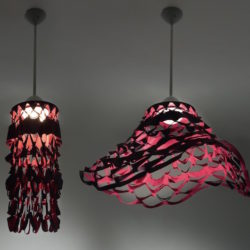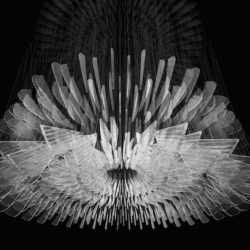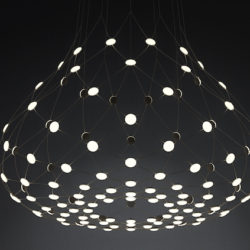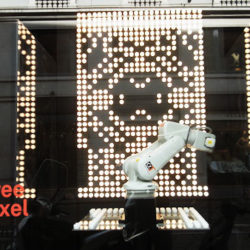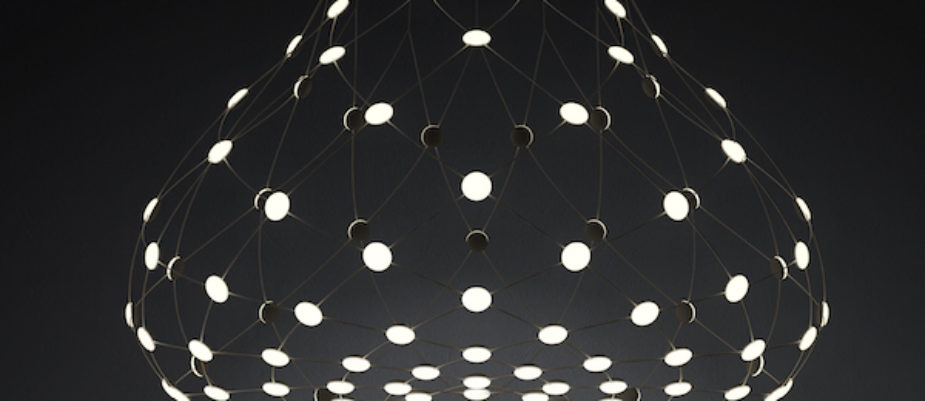
They rotate as whirling dervish’ skirts or floating in the space with slow and sensual movements, they are moving light sculptures that interact with the viewers and the users. Along with these scenic proposals, we saw other innovative dynamic, fluid and interactive lights. Customizable lighting is one of the main trends of Euroluce 2015.
The moving lights change in space as living organisms, these new light fixtures are based on experimentation and research on the potential of LED technology. They offer multiple dramatic lighting scenarios for personalized performances.
Les Danseuses by Artemide, design by Atelier Oi.
This product is based on the Coriolis forces, the same forces that govern the physics of hurricanes. These inertial forces are perpendicular to the direction followed by a body moving in space, which rotates uniformly in turn, as seen by an observer that shares the same reference point. The fabric of the Les Danseuses gowns has a cone-shaped symmetry and the material can freely flow along its surface without stretching or warping, like the atmosphere surrounding the earth.
Supernova by Lasvit, design by Petra Krausova.
The breathtaking Supernova is an interactive glass kinetic sculpture. It magically transforms itself in both time and space, responding to the viewer’s movement by changing its form. The installation is composed of clear glass elements with linear texture that creates fascinating light patterns while moving through various angles.
Mesh by Luceplan, design byFrancisco Gomez Paz.
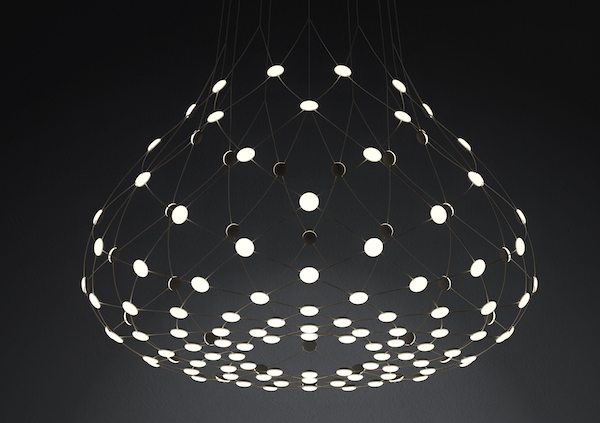
The designer explains: “I set out to create a lamp by starting with this capacity for spatial separation of LEDs, scattering them to optimize the spread of light, but above all with the aim of giving each of these points of light its own independence.
I wanted to make a lamp that lets you control the position and the quantity of light, a flexible object to adapt to space and the needs of the user. To organize the breakdown of the luminous points I used parameters similar to those identified by Fibonacci in nature, like the arrangement of the seeds in a sunflower, the eye-shaped features of a male peacocks plumage, or the complex forms of a head of cabbage. A precise sequence that inspired me for the distribution of the lights in space.”
Free Pixel di Artemide, design di Carlo Ratti.
“Rather than nodes clinging a rigid infrastructure, LEDs can act as their own dynamic and living ecosystem, independent and mobile. As these technologies become ubiquitous, we are witnessing the dawn of the Free Pixel”. Carlo Ratti explains (see the article on Free Pixel).

